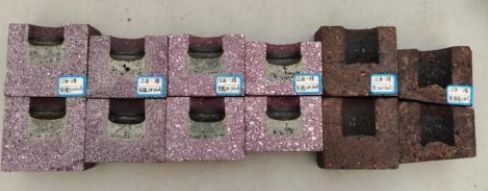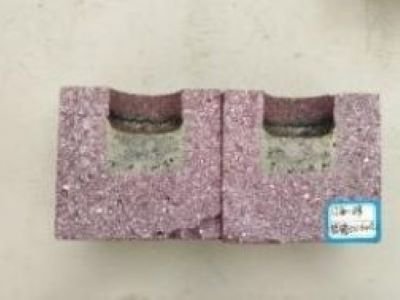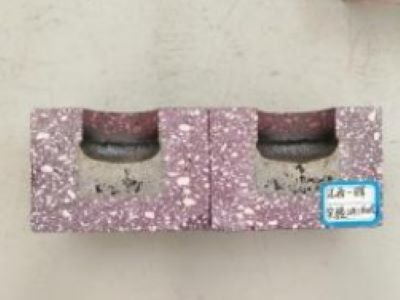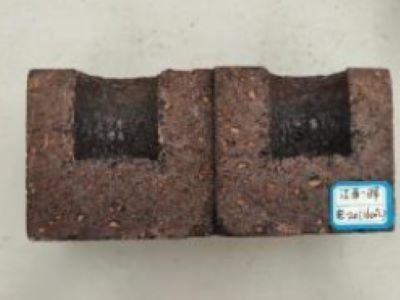In order to scientifically evaluate the service performance of different refractory materials under extreme working conditions and provide a reliable basis for kiln material selection and maintenance, our technical team carefully designed and implemented a static crucible slag resistance test on waste circuit board slag.
This article records in detail the actual performance of crucibles of different materials during the experiment.
1.Purpose of crucible slag resistance experiment
This experiment aims to test the slag resistance of crucibles of various materials at high temperatures, so as to understand their corrosion resistance and permeability resistance in actual use and provide a reference for the selection and use of different refractory materials in kilns.
2.Experimental Principle
The crucible slag resistance test is mainly to place the crucible in a high temperature environment, add corrosive media into crucibles of different materials and sinter them to observe the slag resistance of the crucible. The crucible’s slag resistance is related to its material. Generally speaking, crucibles made of high-grade refractory materials should have good slag resistance, which can effectively prevent corrosive media from invading the crucible at high temperatures or causing damage to the crucible.
3.Experimental steps
(1) Prepare crucibles and experimental materials. Five representative materials were selected to make crucibles, namely, Dian-20, aluminum-chromium D, magnesia-chrome brick, aluminum-chromium 1# experimental brick, aluminum-chromium 2# experimental brick, and aluminum-chromium 3# experimental brick. At the same time, prepare the corresponding high-temperature furnace and erosion slag.
(2) Make a crucible. Use a drilling machine to drill a hole with a diameter of 36 mm and a depth of about 40 mm on the selected sample brick.
(3) Add the mixture. Add 55g of the mixed slag to each crucible. The top surface of the slag should reach approximately 2/3 of the depth of each crucible.
(4) Place the crucibles. Place the crucibles in the high-temperature furnace in order, adjusting their positions to ensure they maintain a certain distance from the heating rods on both sides. Keep the distance between the crucibles uniform to avoid uneven heating.
(5) Start the high-temperature furnace. Set the heating rate and holding time, and raise the high-temperature furnace to the specified temperature.
(6) Heating and Observation. Place the crucible in a high-temperature furnace, heat to the specified temperature of 1600°C, and maintain the constant temperature for 6 hours. After holding the temperature, cool it naturally to room temperature. Observe the changes in the crucible and the slag, and record the erosion of the slag at the bottom of the crucible and the changes on the crucible surface.
7.Data Collation. Summarize experimental data and analyze the ability of crucibles of different materials to resist slag erosion and penetration, selecting products with the best cost-effectiveness.
4.Experimental Results

The above are the crucibles used in this experiment. Overall, each of them has different degrees of penetration and erosion.

After firing in a static crucible, the surface of the aluminum-chromium D brick has no penetration or cracks. After cutting, the cross section has slight erosion and slight penetration, and a slag column is formed at the bottom. This brick has good corrosion resistance and permeability.
After firing in a static crucible, the surface of the aluminum-chromium 1# experimental brick had no penetration or cracks. After cutting, the cross-section had slightly serious erosion and slight penetration, and a slag column was formed at the bottom. This brick has good corrosion resistance and permeability.

After firing in a static crucible, the surface of the aluminum-chromium 2# experimental brick showed no penetration or cracks. However, after cutting, the cross-section showed severe erosion and obvious penetration, with slag columns formed at the bottom. The erosion resistance and permeability of this brick are average.
After firing in a static crucible, the surface of the aluminum-chromium 3# experimental brick has no penetration or cracks. After cutting, the cross-section has slight erosion and slight penetration, and a slag column is formed at the bottom. This brick has good corrosion resistance and permeability.

After firing, the surface of the Dian-20 static crucible has no cracks and no penetration. After cutting, the cross-section has severe erosion and severe penetration, and no slag column is formed at the bottom. This brick has poor erosion resistance and penetration resistance.
There are no cracks or penetration on the surface of static crucible of magnesia-chrome brick after firing. After cutting, the cross section has serious erosion and serious penetration, and no slag column is formed at the bottom. This kind of brick has poor erosion resistance and permeability resistance.
5.Experimental Conclusion
The erosive slag used in this static crucible slag resistance experiment has certain corrosiveness and permeability to the products of the selected materials. Based on the above experimental results, the slag resistance of the products tested is ranked as follows: Alumina-Chrome D Brick > Alumina-Chrome Experimental Brick #3 > Alumina-Chrome Experimental Brick #1 > Alumina-Chrome Experimental Brick #2 > Electro-20 > Magnesia-Chrome Brick.
